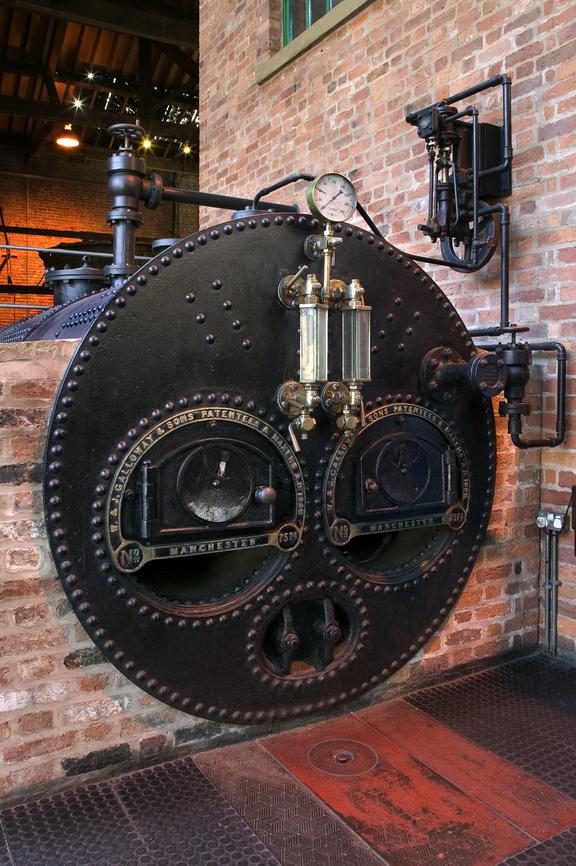Lancashire Boiler
- Made:
- 1889 in Manchester




Lancashire boiler, made by W & J Galloway & Sons Ltd, 1889.
This boiler was used by bedding manufacturers John Sawtell & Co, where the steam was used to curl feathers for stuffing pillows. Lancashire boilers were most often used to power steam engines.
The Lancashire boiler was developed by William Fairbairn in 1844, in an attempt to create a boiler where as much heat as possible from the fire was transferred to the water, and not lost. Two furnace tubes run through the boiler, where the fires would be stoked, and were surrounded with water for maximum heat transfer.
W & J Galloway & Sons Ltd, who made this boiler, made their boilers even more efficient by adding extra tubes which crossed the furnace tubes to allow more heat transfer. A typical Lancashire boiler would consume six tons of coal per day. Water levels had to be carefully maintained, otherwise the pressure would get too high and cause an explosion.
Details
- Category:
- Motive Power
- Object Number:
- Y1971.59
- Materials:
- cast iron, brass (copper, zinc alloy) and glass
- Measurements:
-
overall: 7 ton
- type:
- steam boiler
- credit:
- Gift of Messers John Sawtell & Co Ltd





